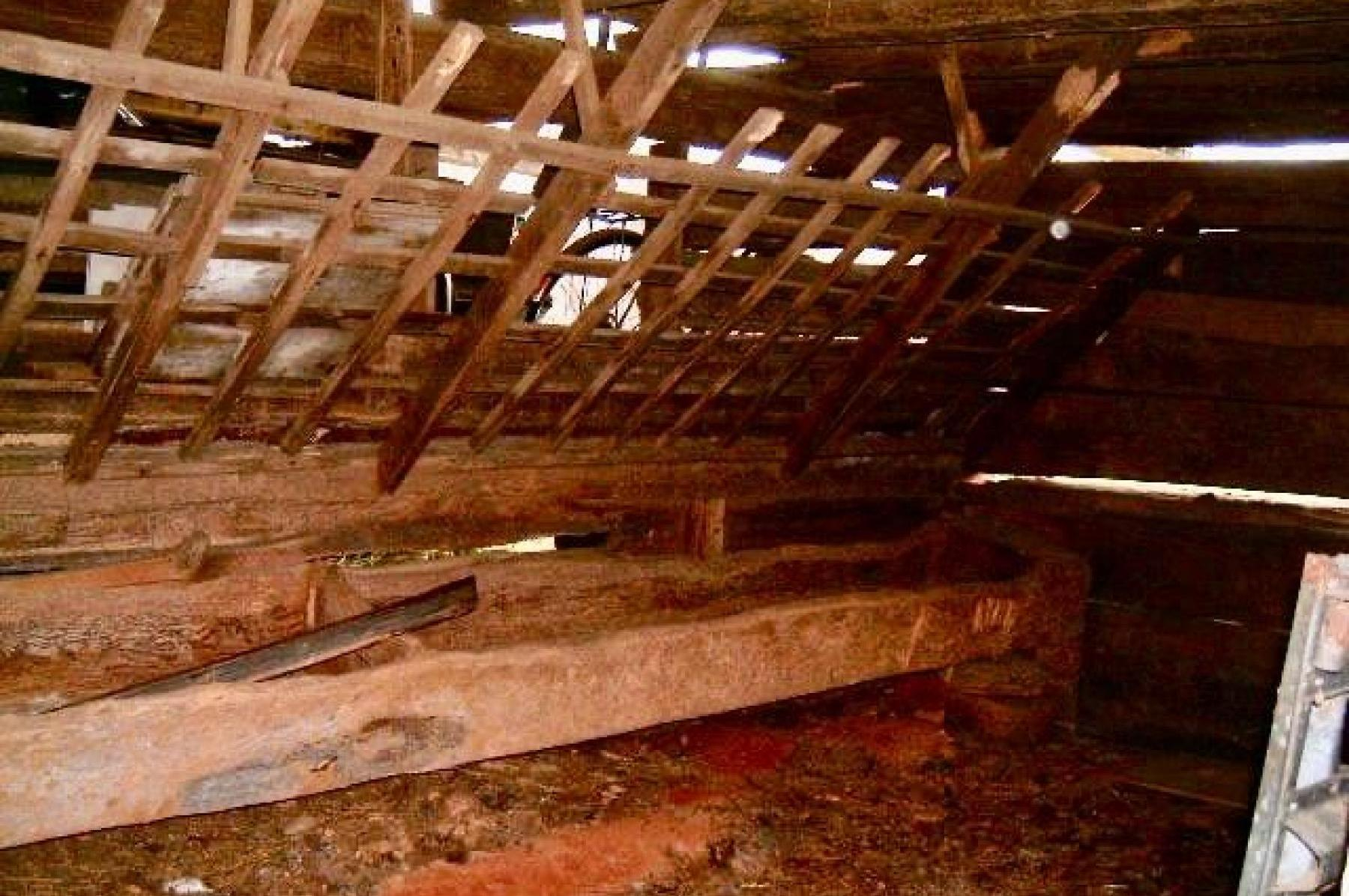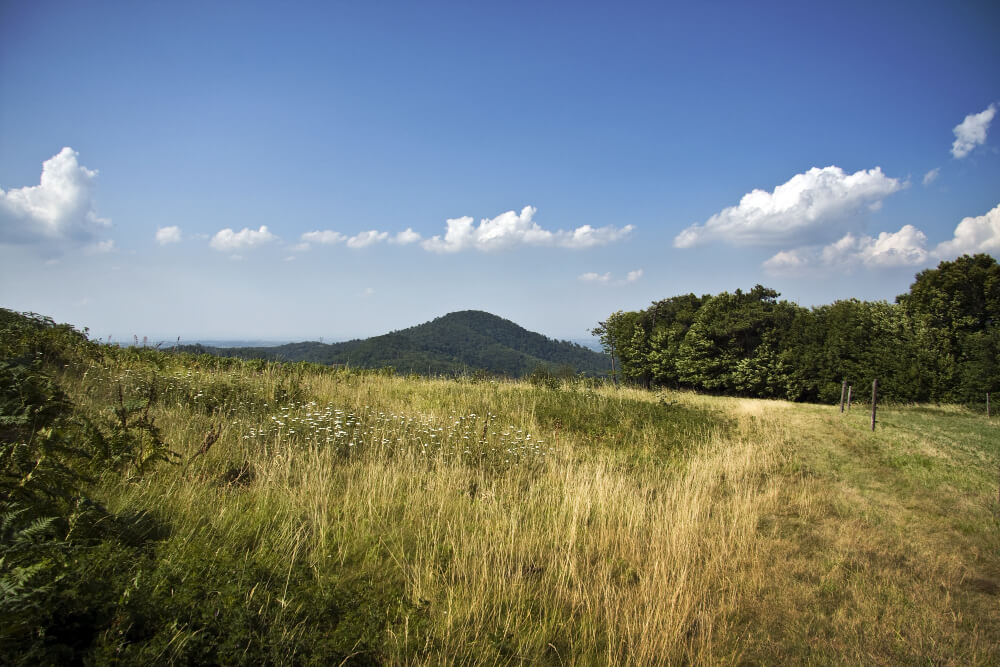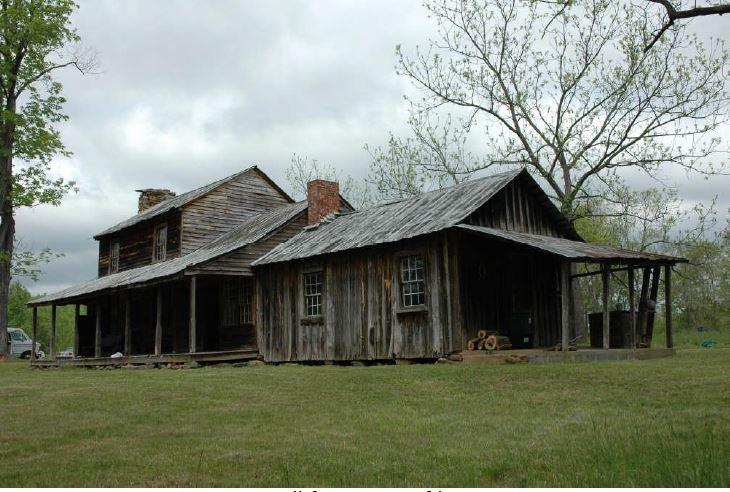Artisans, versatile in their skills, were mobile and able to travel and work throughout an area as large as three counties. It seems likely that specialized tradesmen helped to construct the Hubbard house. The intricately constructed fieldstone chimney from onsite material suggests a mason’s craftsmanship and a joiner’s work is evident in the Federal-style fireplace mantles, wainscoting, and trim molding.
The full-length front porch seen on the Hubbard house was common in Southern houses by the late 1700s. The one-over-one or two-over-two room layout of a bedroom or bedrooms over a parlor or parlor and bedroom is typical of log houses, and the proportion of room size reflects the value of interior space. The parlor of the Hubbard House is five feet wider than the smaller bedroom, with the same proportions in the upstairs rooms.
From the 1780s, when traditional building flourished at all levels of society, log architecture in North Carolina attained its greatest variety and quality. Undulated furring strips were crafted to counter the imprecise squaring of the logs, allowing a plumb surface on which to attach the weatherboard. The construction techniques of the components indicate the quality with which the house was built. These components included a shingled roof, glass windows, an enclosed rake, shutters, a full-length front porch, an enclosed stairway, and tongue- and-groove flooring. The Benjamin Hubbard House is an excellent example of refined log construction containing interior and exterior details that display sophisticated craftsmanship.
The half-dovetail notch two-story log houses reflect elements of traditional German building techniques, with their enclosed winder stairs, rooms of unequal size, and hall and parlor rooms. This tradition also included an interior centered chimney, but the Hubbard House demonstrates the assimilation of the Tidewater, Anglo-tradition of exterior, gable-end chimneys into the German floor plan. Early, influential Pennsylvania settlers conformed to a Scotch-Irish form of rectangular log houses built using German techniques, with spaces left between the logs for chinking and frequently covering the logs with board siding, as with the Hubbard House.
Benjamin Hubbard House

South Elevation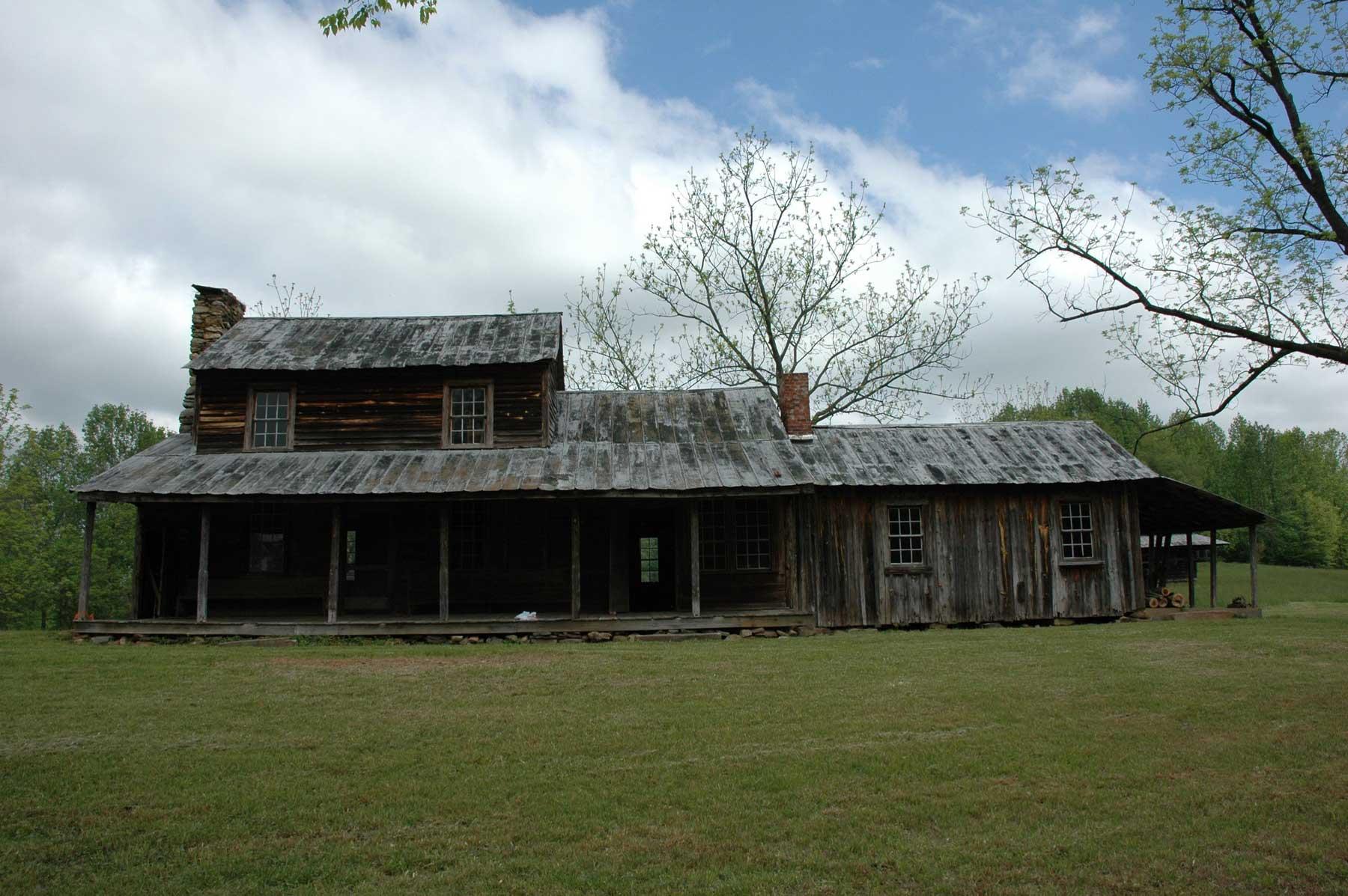
West Elevation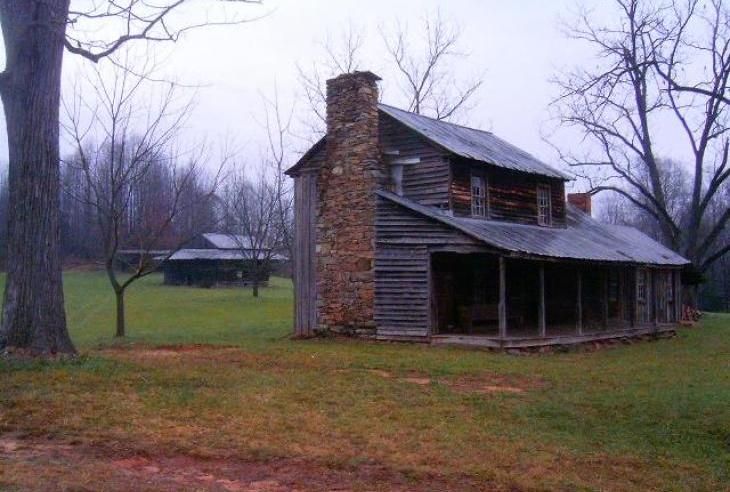
North Elevation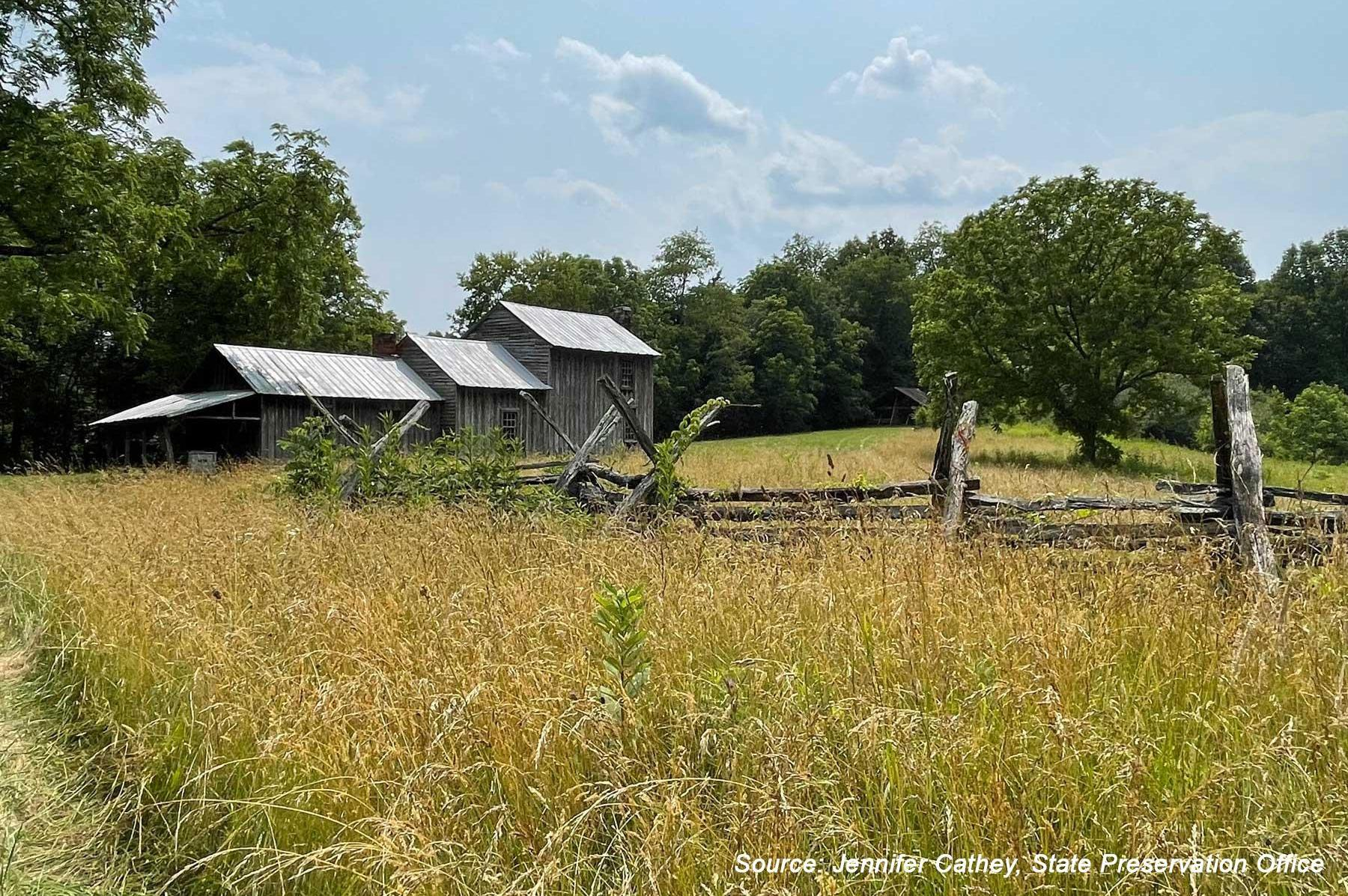
East Elevation
Barn
The multi-pen barn was built in 1846, as a wedding gift from Peter and Anna Smith Saner for their daughter, Jane Elizabeth, and her husband William Henry Hubbard. The Saners, who lived in nearby in Boomer, were Moravians and the barn’s design reflects their German influence, and is atypical of Southern Appalachian barns. It is constructed of forty-feet long, ten-inch square logs held together with notches and pegs. The loft’s floor joists cantilever about six feet beyond the walls and are covered by wide eaves, allowing extra space for hay storage. Preservation of the barn is deferred until further funds are obtained.
Southwest Corner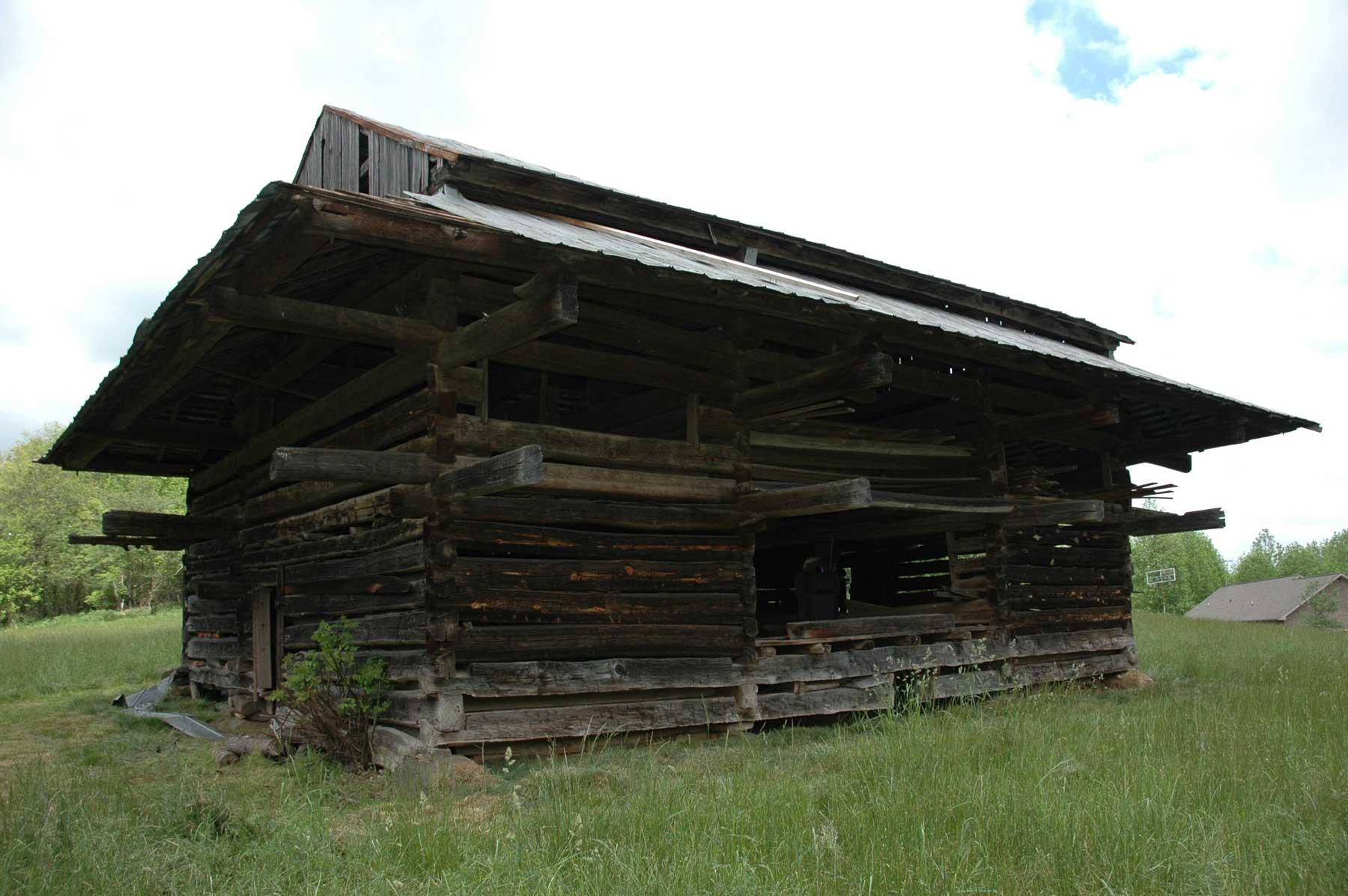
East
South
Interior With Dug-out Feeding Trough